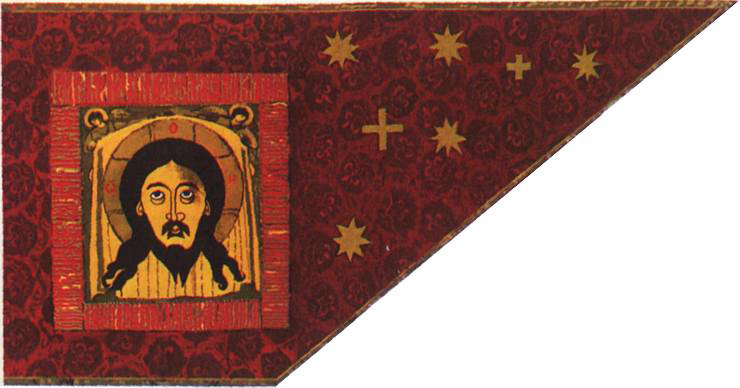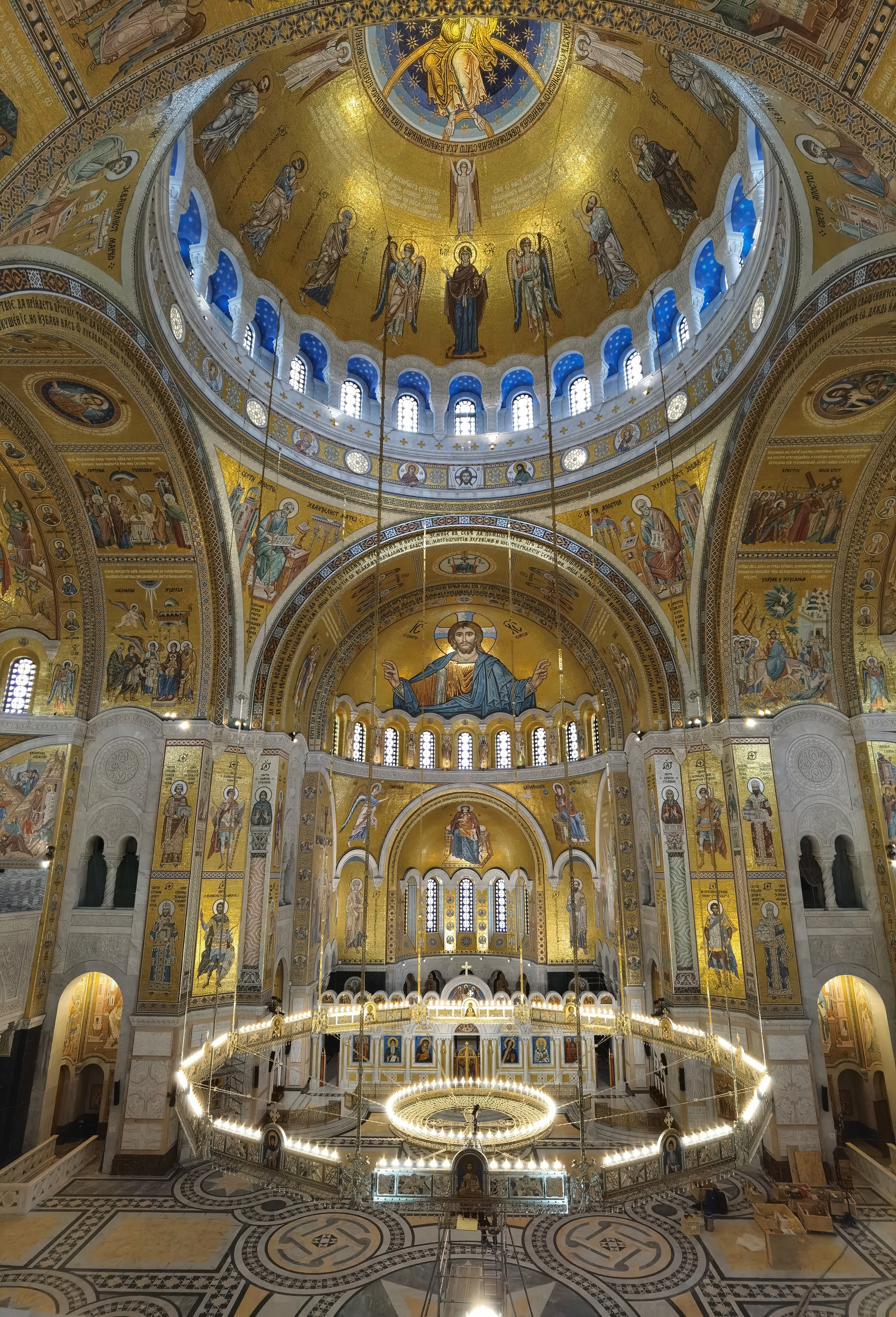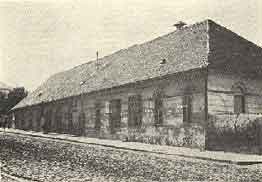|
Russophilia
Russophilia (literally love of Russia or Russians) is admiration and fondness of Russia (including the era of the Soviet Union and/or the Russian Empire), Russian history and Russian culture. The antonym is Russophobia. In the 19th Century, Russophilia was often linked to variants of Pan-Slavism, since the Russian Empire and the autonomous Serbia were the only two slav-associated sovereign states during and after Spring of Nations. Russophilia in Europe American author Robert Alexander wrote: "I love Russians for their dramatic, emotional nature. They're not afraid to love, not afraid to get hurt, not afraid to exaggerate or act impulsively." Russophilia in Serbia Russia is hugely popular in Serbia, and Serbs have always traditionally seen Russia as a close ally due to shared Slavic heritage, culture, and Orthodox faith. According to European Council on Foreign Relations, 54% of Serbians see Russia as an ally. In comparison, 11% see European Union as an ally, and onl ... [...More Info...] [...Related Items...] OR: [Wikipedia] [Google] [Baidu] |
Pan-Slavism
Pan-Slavism, a movement which crystallized in the mid-19th century, is the political ideology concerned with the advancement of integrity and unity for the Slavic people. Its main impact occurred in the Balkans, where non-Slavic empires had ruled the South Slavs for centuries. These were mainly the Byzantine Empire, Austria-Hungary, the Ottoman Empire, and Venice. Origins Extensive pan-Slavism began much like Pan-Germanism - both these movements flourished from the sense of unity and nationalism experienced within ethnic groups after the French Revolution and the consequent Napoleonic Wars against traditional European monarchies. As in other Romantic nationalist movements, Slavic intellectuals and scholars in the developing fields of history, philology, and folklore actively encouraged Slavs' interest in their shared identity and ancestry. Pan-Slavism co-existed with the Southern Slavic drive towards independence. Commonly used symbols of the Pan-Slavic movement were the P ... [...More Info...] [...Related Items...] OR: [Wikipedia] [Google] [Baidu] |
Anti-Russian Sentiment
Anti-Russian sentiment, commonly referred to as Russophobia, is dislike or fear of Russia, the Russians, Russian culture. or Russian policy. The Collins English Dictionary defines it as intense and often irrational hatred of Russia. It is the opposite of Russophilia. In the past, Russophobia has included state-sponsored mistreatment and propaganda against Russians in France and Germany. During the Nazi era, Germany deemed Russians and other Slavs, an inferior race and "sub-human" and called for their extermination. In accordance with Nazi ideology, millions of Russian civilians and POWs were murdered during the German occupation in World War II. In the event the Nazi campaign against the Soviet Union was successful, Adolf Hitler and other top Nazi officials were prepared to implement Generalplan Ost (General Plan for the East). This directive would have ordered the murder of tens of millions Russians alongside other ethnic groups that inhabited the Soviet Union as part of creat ... [...More Info...] [...Related Items...] OR: [Wikipedia] [Google] [Baidu] |
Flag Of Russia
The national flag of Russia (russian: Флаг России, Flag Rossii), also known as the ''State Flag of the Russian Federation'' (russian: Государственный флаг Российской Федерации, Gosudarstvenny flag Rossiyskoy Federatsii), is a tricolour flag consisting of three equal horizontal fields: white on the top, blue in the middle, and red on the bottom. The flag was first used as an ensign for Russian merchant ships in 1696. It remained in use until 1858, when the first official flag of the Russian Empire was decreed by Alexander II, which was a tricolour consisting of three horizontal fields: black on the top, yellow in the middle, and white on the bottom. A decree in 1896 reinstated the white, blue, and red tricolour as the official flag of the Russian Empire until the Revolution of 1917. Following the creation of the Russian Socialist Federative Soviet Republic after the Bolshevik Revolution, the Russian tricolour was abolished, but ... [...More Info...] [...Related Items...] OR: [Wikipedia] [Google] [Baidu] |
European Union
The European Union (EU) is a supranational union, supranational political union, political and economic union of Member state of the European Union, member states that are located primarily in Europe, Europe. The union has a total area of and an estimated total population of about 447million. The EU has often been described as a ''sui generis'' political entity (without precedent or comparison) combining the characteristics of both a federation and a confederation. Containing 5.8per cent of the world population in 2020, the EU generated a nominal gross domestic product (GDP) of around trillion in 2021, constituting approximately 18per cent of global nominal GDP. Additionally, all EU states but Bulgaria have a very high Human Development Index according to the United Nations Development Programme. Its cornerstone, the European Union Customs Union, Customs Union, paved the way to establishing European Single Market, an internal single market based on standardised European Un ... [...More Info...] [...Related Items...] OR: [Wikipedia] [Google] [Baidu] |
Cathedral Of Saint Sava
The Temple of Saint Sava ( sr-Cyrl, Храм Светог Саве, Hram Svetog Save, lit='The Temple of Saint Sava') is a Serbian Orthodox church which sits on the Vračar plateau in Belgrade, Serbia. It was planned as the bishopric seat and main cathedral of the Serbian Orthodox Church. The church is dedicated to Saint Sava, the founder of the Serbian Orthodox Church and an important figure in medieval Serbia. It is built on the presumed location of St. Sava's grave. His coffin had been moved from Mileševa Monastery to Belgrade. The coffin was placed on a pyre and burnt in 1595 by Ottoman Grand Vizier Sinan Pasha. Bogdan Nestorović and Aleksandar Deroko were finally chosen to be the architects in 1932 after a second revised competition in 1926–27 (for which no first award was granted, Nestorović being runner up). This sudden decision instigated an important debate in interwar Yugoslavia which centered around the temple's size, design and symbolic national function.Al ... [...More Info...] [...Related Items...] OR: [Wikipedia] [Google] [Baidu] |
Red Star Stadium
The Rajko Mitić Stadium ( sr, / , ), previously known as Red Star Stadium ( sr, / ), also known as Marakana ( sr-Cyrl, Маракана), is a multi-use stadium in Belgrade, Serbia which has been the home ground of Red Star Belgrade since 1963. The stadium is located in Dedinje, municipality of Savski Venac. Rajko Mitić Stadium, renamed in December 2014 in honor of club's former player and legend Rajko Mitić (1922–2008), has a seating capacity of 53,000 and is currently the largest stadium in Serbia by capacity. The Stadium has hosted numerous international matches at a senior level, including European Cup final in 1973 and UEFA European Championship finals in 1976. History The first football stadium in this location was opened on 24 April 1927. It was the stadium of SK Jugoslavija, Yugoslav football champion in 1924 and 1925. It consisted of a 30,000 capacity stadium with grass pitch, athletic track, training facility and club house. SK Jugoslavija played its mat ... [...More Info...] [...Related Items...] OR: [Wikipedia] [Google] [Baidu] |
National Assembly Of Serbia
The National Assembly ( sr-cyr, Народна скупштина, Narodna skupština, ) is the unicameral legislature of Serbia. The assembly is composed of 250 deputies who are proportionally elected to four-year terms by secret ballot. The assembly elects a president (speaker) who presides over the sessions. Wikisource: Constitution of Serbia The National Assembly exercises supreme legislative power. It adopts and amends the Constitution, elects Government, appoints the Governor of the National Bank of Serbia and other state officials. All decisions are made by majority vote of deputies at the session at which a majority of deputies are present, except for amending the Constitution, when a two-thirds majority is needed.National Assembly of SerbiaInformer (This text is in the public domain as the official material of the Republic of Serbia state body or a body performing public functions, under the terms of Article 6, Paragraph 2 of Serbian copyright law) The assembly ... [...More Info...] [...Related Items...] OR: [Wikipedia] [Google] [Baidu] |
Dmitry Medvedev
Dmitry Anatolyevich Medvedev ( rus, links=no, Дмитрий Анатольевич Медведев, p=ˈdmʲitrʲɪj ɐnɐˈtolʲjɪvʲɪtɕ mʲɪdˈvʲedʲɪf; born 14 September 1965) is a Russian politician who has been serving as the deputy chairman of the Security Council of Russia since 2020. Medvedev also served as the president of Russia between 2008 and 2012 and prime minister of Russia between 2012 and 2020. Medvedev was elected president in the 2008 election. He was regarded as more liberal than his predecessor, Vladimir Putin, who was also appointed prime minister during Medvedev's presidency. Medvedev's top agenda as president was a wide-ranging modernisation programme, aiming at modernising Russia's economy and society, and lessening the country's reliance on oil and gas. During Medvedev's tenure, the New START nuclear arms reduction treaty was signed by Russia and the United States, Russia emerged victorious in the Russo-Georgian War, and recovered from th ... [...More Info...] [...Related Items...] OR: [Wikipedia] [Google] [Baidu] |
Russian Center Of Science And Culture (Belgrade)
sh, Руски дом, translit=Ruski dom , image = Ruski dom, Beograd.jpg , image_alt = Russian House (Ruski dom) , image_size = 310px , caption = General view of The Russian House , former_names = Emperor Nicholas II's Russian House (1933-45)House of Soviet culture (1945-94) , alternate_names = Russian Center of Science and Culture , building_type = Public building , architectural_style = neoclassicism , cost = , location = Serbia, Belgrade, Stari Grad , address = Belgrade, Queen Natalia str., 33 , client = , owner = Rossotrudnichestvo of Russian Ministry of Foreign Affairs , current_tenants = , coordinates = , start_date = June 22, 1931 , completion_date = , inauguration_date = April 9, 1933 , demolition_date = , height = , diameter = , other_dimensions = , floor_co ... [...More Info...] [...Related Items...] OR: [Wikipedia] [Google] [Baidu] |
Hotel Moskva, Belgrade
Hotel Moskva ( sr-Cyrl, Хотел Москва; ; en, Hotel Moscow) is a four star hotel in Belgrade, one of the oldest currently operating in Serbia. The building has been under governmental protection since 1968. Originally operating as a 36-room inn within the multi-purpose Palace Rossiya, whose almost three-year construction and January 1908 opening represented a major investment of the Russian Empire in the Serbian economy, Hotel Moskva eventually expanded its facilities to take up the entire palace. Location Hotel Moskva is located on the Terazije square in Belgrade's downtown core, administratively part of the Stari Grad municipality. It lies at the intersection of three streets: Terazije, Prizrenska, and Balkanska. Its location on top of Terazijska Terasa provides a wonderful skyline view of Novi Beograd, across the Sava river. The entire area of Terazije is abundant in underground streams, causing major problems for large scale construction projects in the are ... [...More Info...] [...Related Items...] OR: [Wikipedia] [Google] [Baidu] |
Russian Center Of Science And Culture, Belgrade
sh, Руски дом, translit=Ruski dom , image = Ruski dom, Beograd.jpg , image_alt = Russian House (Ruski dom) , image_size = 310px , caption = General view of The Russian House , former_names = Emperor Nicholas II's Russian House (1933-45)House of Soviet culture (1945-94) , alternate_names = Russian Center of Science and Culture , building_type = Public building , architectural_style = neoclassicism , cost = , location = Serbia, Belgrade, Stari Grad , address = Belgrade, Queen Natalia str., 33 , client = , owner = Rossotrudnichestvo of Russian Ministry of Foreign Affairs , current_tenants = , coordinates = , start_date = June 22, 1931 , completion_date = , inauguration_date = April 9, 1933 , demolition_date = , height = , diameter = , other_dimensions = , floor_co ... [...More Info...] [...Related Items...] OR: [Wikipedia] [Google] [Baidu] |






